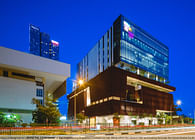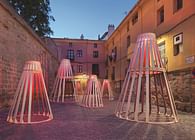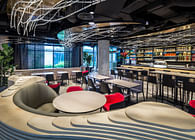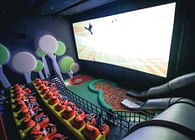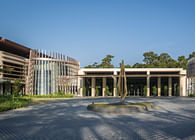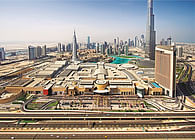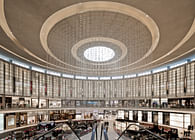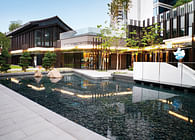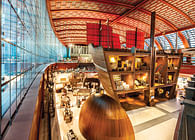
Singapore, SG
Mövenpick Heritage Hotel is the result of a sensitive and dedicated conservation of two three-storey pre-war buildings located on Sentosa island. The compound has a rich heritage of housing military forces: being part of an existing military barracks built in 1940, it also held the distinction of housing the First Malay Artillery Regiment of Singapore.
The client challenged the design team to celebrate the heritage of the site and create a unique hospitality experience befitting the stature of the Mövenpick Hotels & Resorts group. The design team delved deep into the historical heritage of Singapore and its rich colonial history to imbue the hotel with a mix of tradition and modernity. Director Jeremy Tan says:
Beginning with the architecture, heritage doors were given new life, and ventilation grilles were restored and used to conceal services. Space planning was creatively thought through to bring back the communal atmosphere of the colonial barracks by creating an uninterrupted flow of space throughout the food and beverage areas at the first storey.
Tablescape, the all-day-dining restaurant, has low partitions that dichotomise the dining experience, offering terrace views for families and pool-front dining with cosy, romantic booths. The design featuring colonial pillars, greenery and sculpted stone is a blend of hardscape and softscape; tradition and modernity.
The combination of the function rooms, The WoW whiskey bar at the East Wing and Tablescape at the West Wing creates an eclectic dining experience for guests and visitors. The sprawling function rooms spill over through the verandah onto the Merlion Terrace, and can be easily reconfigured for an intimate bespoke dining experience with a show-kitchen, to business seminars or banquet settings. The whiskey bar is also perfect for casual brunches over the large wooden table, honed from a singular native tree trunk. Vintage bicycle chairs that recapture a bygone era are displayed at the entrance and galleria.
The former link between the two barracks is revitalised into a breathtaking triple-volume space framed by cleverly designed lattice patterns inspired by rice grains, a local and regional staple. These patterns are brought through to the linkway galleria where light percolates through the screens, creating a soft, dappled effect.
Attention to detail was a key contributor to the success of the interior design. With the imagery of visiting or staying at a favourite relative’s manor house in mind, the designers projected themselves as potential residents, and attempted to recreate a sensory experience redolent of luxurious lifestyles of the 1940s. Conveying timely elegance in the language of our forefathers, artefacts of our rich local heritage were introduced to enchant guests with sentimentality and familiarity.
The same design approach is manifested in unique room types to charm returning guests with the novelty of sleeping in a different room every time they visit. The floor joists of old tropical houses were introduced as ceiling rafters in the living area to echo shophouse designs of the past. The conservation doors separate the living and sleeping areas, and also create a sense of progression from the bedroom to dressing area to the bathroom. The alignment of the balcony glass respects the colonial façade while keeping the elements and the bustling noises at bay.
For the interior furnishings, the focus was on handicraft as a means of expression. The designers chose to reinterpret patchwork blankets from our grandmothers’ time into the design for the headboard, which also doubles as acoustic paneling. The artwork also took cues from the traditional Chinese coin design, emerging as a modern take on the traditional. Coupled with the cannily selected furniture, the atmosphere is one of cosiness and nostalgia. Additional touches include thoughtful details such as dim sum carriers for toiletries, moss-framed mirrors that bring the verdant green into the interior, and antique phones and accessories scattered throughout the property. Old rustic roof tiles were reinvented as room signage, and the corridor carpet pattern was inspired by intricate batik designs.
The design direction was carried through from concept to implementation right up to the interior staging, as well as colour schemes for the day-to-day operation of the hotel. Selection of plants for display throughout the hotel was also given special attention, where the designers eschewed the typical stately centrepiece arrangements, but instead chose hardy, backyard garden variety of local plants in cluster settings, much like how the mistress of the house would do in the past.
Overall, the Mövenpick Heritage Hotel experience is about celebrating the genius loci, weaving context and culture to create a sense of the familiar for the relaxation and enjoyment of its guests.
(The photos belong to Movenpick Heritage Hotel Sentosa.)
Status: Built
